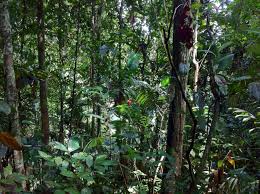Source: rothamsted.ac.uk
Published: November 4, 2016

Conservation agriculture (often termed CA) is often claimed to lock up (“sequester”) carbon in soil and thus contribute to the “mitigation” of climate change. Scientists at Rothamsted Research, which is strategically funded by the BBSRC, and colleagues at The International Maize and Wheat Improvement Center (CIMMYT), in the U.K., Delhi and Harare, reviewed results from a total of 76 studies in the two regions of the world, to assess whether CA practices increased the stock of organic carbon in soil. Two regions of the world that are vital for food security, though for very different reasons, were studied: the Indo-Gangetic Plains, known as the bread-basket of South Asia, and Sub-Saharan Africa where yields of maize, the staple crop for many people, are extremely low and further threatened by climate variability and change. They found that there was a general trend for soil carbon to be slightly increased under CA compared to conventional practices, but the magnitude was less than is often claimed and there were a significant number of cases where there was no measurable increase. The study, which was funded by the Climate Change, Agricultural and Food Security (CCAFS) and MAIZE programmes of the Consultative Group on International Agricultural Research (CGIAR), is published in the journal Agriculture, Ecosystems & Environment.
CA comprises three principles: reduced soil disturbance, maintaining soil cover with crop residues or green manures, and diversifying cropping systems. The practice is widely promoted around the world, in both developed and developing countries. It can improve soil quality, reduce erosion and conserve soil moisture.
Lawes Trust Senior Fellow at Rothamsted Research and lead study author, Professor David Powlson said: “The current study showed that even where soil carbon was increased the data had to be interpreted carefully to assess whether there was a genuine additional transfer of carbon from atmospheric carbon dioxide to soil organic matter – the requirement for mitigating climate change. In many cases the impact was to relocate organic carbon within the soil profile or landscape, with limited additional accumulation compared to conventional cropping practice due to low availability of biomass for surface retention”
“In addition, it is well known that there are significant social, economic and infrastructural barriers to the adoption of CA by small resource-poor farmers in tropical regions, so the realistically achievable degree of climate change mitigation is further limited. However, there are some good examples of these barriers being overcome with economic and livelihood benefits for farmers.”
The authors concluded that claims for CA slowing climate change were over-stated. However, by concentrating organic carbon near the soil surface, the practice was usually beneficial for soil physical properties and retention of water. It can therefore be regarded as contributing to climate change adaptation, even if the mitigation impact is small. Professor David Powlson said: “We recommend that CA should be promoted because it often improves soil quality and, if local conditions are right, can improve farmers’ livelihoods. Any climate change mitigation that occurs should be regarded as an additional benefit, not a major policy driver for its adoption.”
The team also said that the improved soil physical properties usually resulting from CA “can reasonably be regarded as contributing to climate change adaptation and to sustainable intensification, whether or not they consistently deliver increased crop yields in every season.” And in regions where nitrogen fertilizer is already used at high rates, such as the Indo-Gangetic Plains, improved management of nitrogen will often deliver greater reductions in greenhouse gas emissions than CA. An additional finding from the study, though based on limited experimental data, was that crop diversification (either through crop rotation or integration of tree-based elements) may deliver more soil carbon sequestration than reduced tillage or crop residue retention. This third principle of CA is often overlooked and the authors suggest it deserves greater attention.
This article no longer exists at the Source link above. It can be found in the Matteroftrust.org Resource Library.
